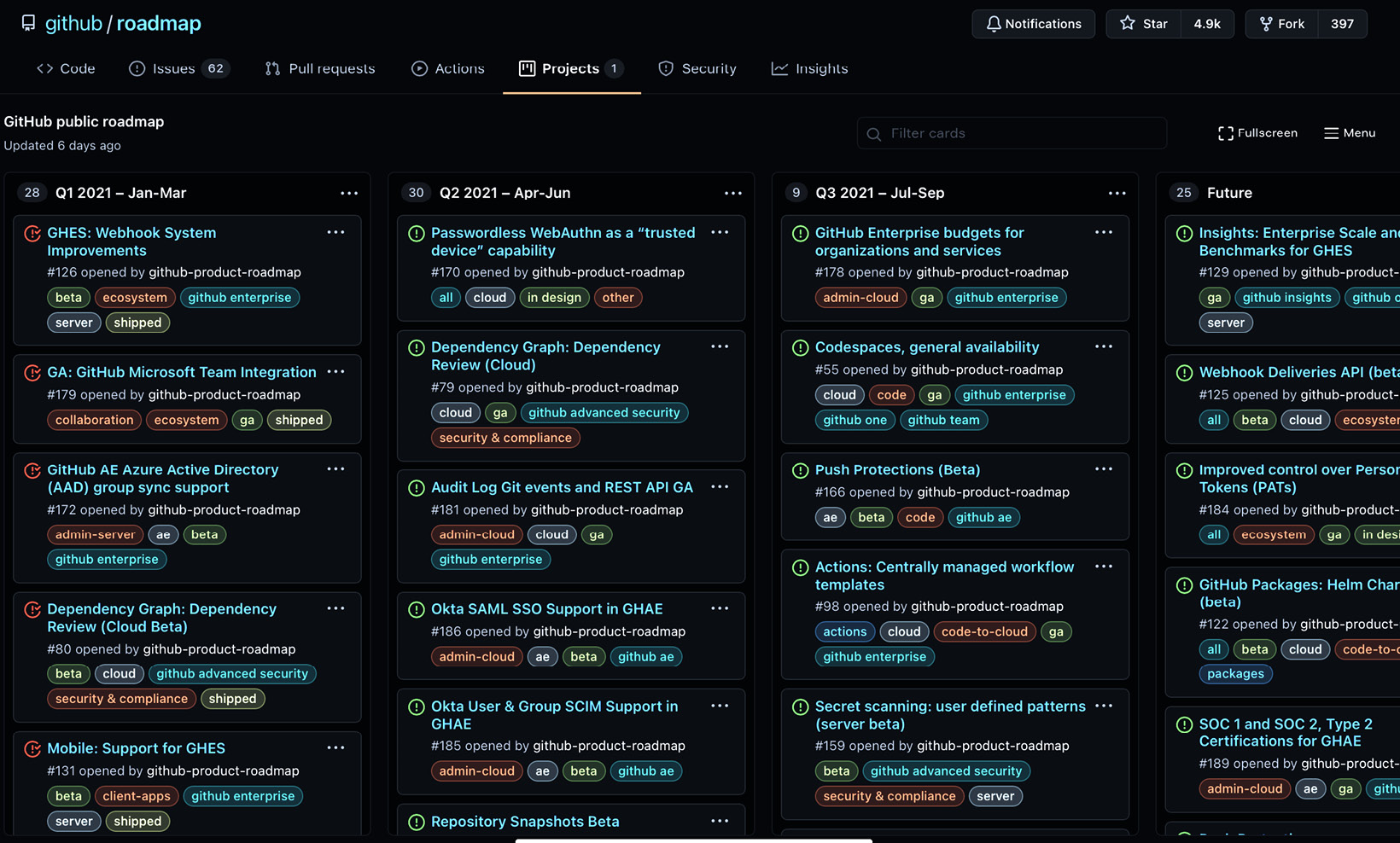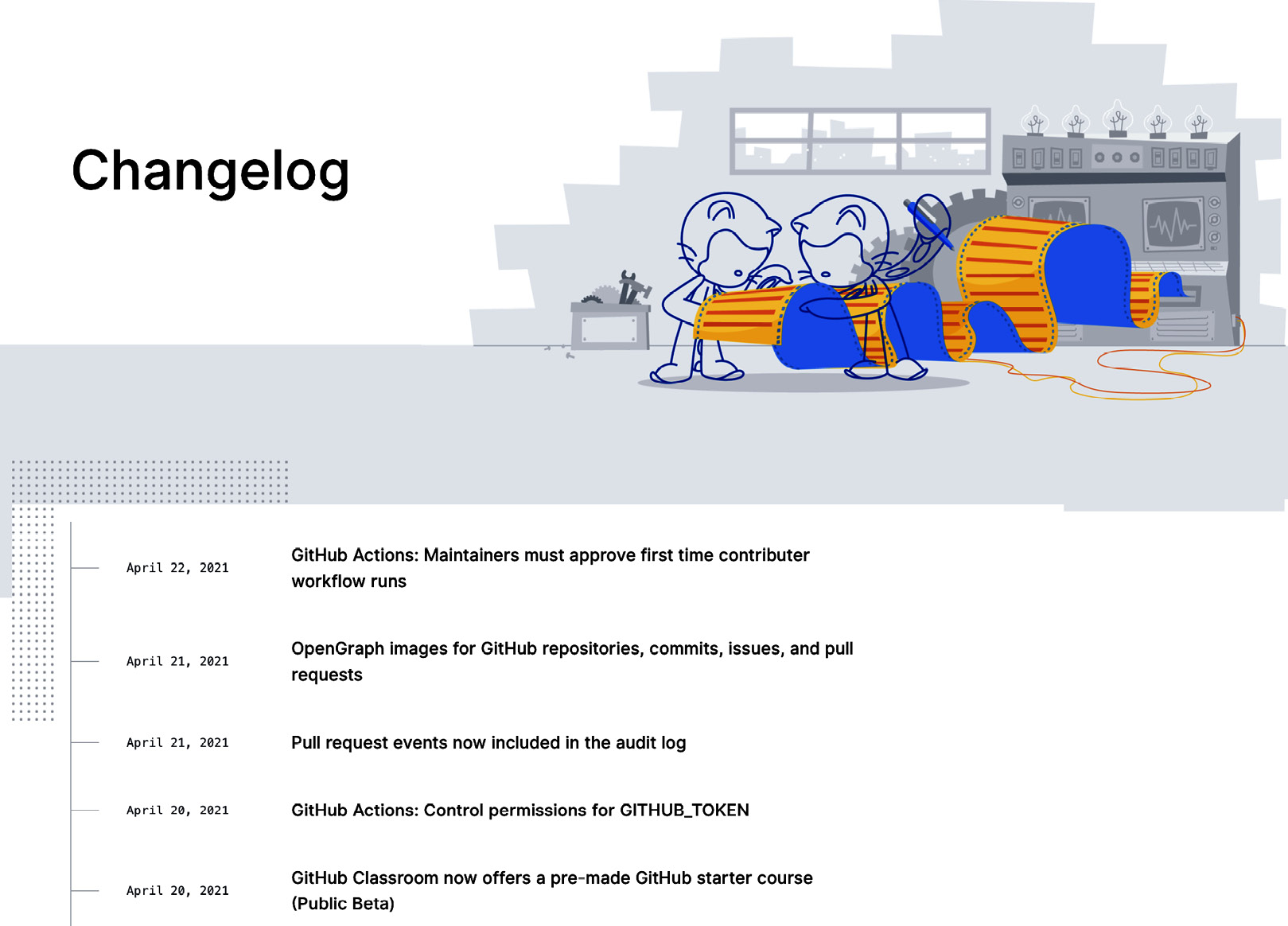Chapter 9: The Future of GitHub Actions
Soon, GitHub Actions will become an essential part of your CI/CD pipeline, no matter how simple or complex it may be. Given its importance in your workflow and tasks, you should always take advantage of updates and improvements that will continue improving GitHub Actions.
By reading this chapter, you will learn about resources that will help you stay up to date with the latest news and updates to GitHub Actions. To present those resources, this chapter is organized into the following sections:
- Checking the GitHub roadmap
- Reading the GitHub blog and changelog
- Connecting through social media
By the end of this chapter, you will know what social media accounts to follow and what pages to visit to learn about features and updates being added to GitHub Actions.
Technical requirements
You will need access to a device that has a connection to the internet.
Checking the GitHub roadmap
GitHub's roadmap is one of the most reliable ways to be informed about what the company is working on and plans on releasing in future months. The roadmap displays the release plans for many GitHub products, including GitHub Actions.
Important note
To see GitHub's roadmap, visit https://github.com/github/roadmap/projects/1.
The roadmap is organized into quarters. Each feature on the roadmap is categorized based on a few factors:
- Feature area: Such as ecosystem, which includes API features, for example, and code-to-cloud, which includes GitHub Actions.
- Release phase: Such as alpha, beta, and generally available (GA).
- Feature: Such as actions, docs, packages, or pages.
- Product SKU: This represents the many GitHub product SKUs, such as GitHub team, GitHub Enterprise, GitHub AE, and others:

Figure 9.1 – The GitHub roadmap
Note how GitHub's roadmap lives in a public repository and was created using a GitHub feature called Projects. Within this project, all features represent GitHub issues. Because this is a repository, you can be notified when changes happen. To configure what kind of notification you want to receive, click on the Notifications button in the top right-hand corner and select your preferred option. If you would prefer not to receive any notifications, you can consider starring this repository, which won't send you notifications but can help you in navigating back to this repository at a later time. To star this repository, click on the Star button in the top right-hand corner.
To learn more about GitHub's roadmap, read the project's README file at https://github.com/github/roadmap/blob/main/README.md.
In addition to the roadmap, GitHub regularly announces new features, changes, and updates on their blog and changelog page.
Reading the GitHub blog and changelog
The GitHub blog is one of GitHub's many platforms to officially share announcements and updates. You will often see new blog posts from GitHub employees sharing news about the company, open source, community, and its products.
Important note
To access the GitHub blog, visit https://github.blog/. To view blog posts specifically about GitHub Actions, navigate to https://github.blog/?s=GitHub%20Actions.
The GitHub changelog is part of the GitHub blog and focuses on providing feature updates only. By visiting https://github.blog/changelog/, you will be able to see what changes were recently incorporated into GitHub products and features:

Figure 9.2 – The GitHub blog and changelog
GitHub is present on many different social media platforms, which they also use for important messages and announcements. The next section will help you find GitHub's social media accounts to help you not miss future announcements.
Connecting through social media
Historically, GitHub has made important announcements about new features or major updates to existing products during events such as Universe, their annual conference. GitHub is very active on social media, and often streams live events on platforms such as Twitch and YouTube. Consider connecting with GitHub's accounts to receive alerts when they go live or create a new post.
You can find GitHub on these platforms:
- Twitter, at https://twitter.com/github
- Youtube, at https://www.youtube.com/github
- Twitch, at https://twitch.tv/github
- LinkedIn, at https://www.linkedin.com/company/github
- Facebook, at https://www.facebook.com/GitHub:

Fig. 9.3 – GitHub's page on YouTube
Summary
Outstanding work! You have reached the end of Chapter 9, The Future of GitHub Actions, and the end of Automating Workflows with GitHub Actions.
You are ready to put the new abilities you have gathered into practice. Now it is up to you to identify opportunities where your workflow can be improved and decluttered by implementing easy-to-write GitHub Actions workflows written in a simple YAML file, and that can accomplish so much. Remember to leverage GitHub Marketplace and find actions that fit your needs with little effort to implement. Deepen your knowledge by frequently visiting the GitHub documentation and interacting with the community. Automate repetitive tasks so that you can focus on what truly matters.
